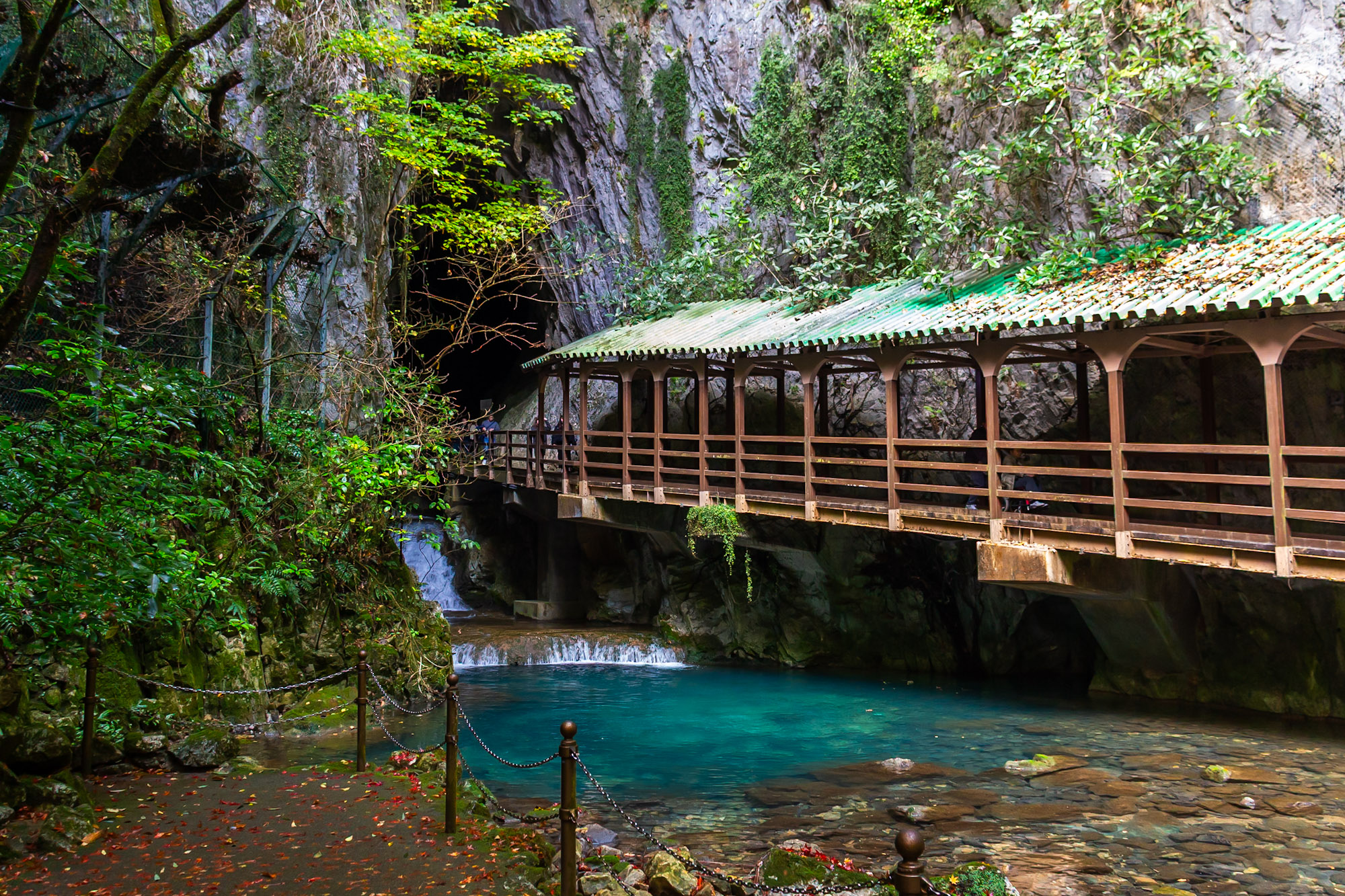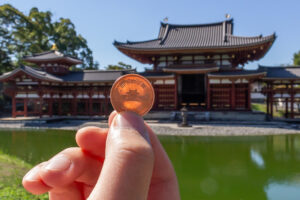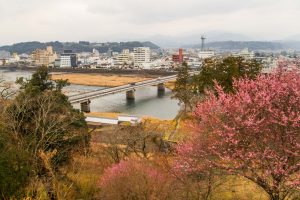In the heart of Yamaguchi lies the city of Mine. With a population of just over 20,000, it’s one of the more rural areas of the prefecture. But what it lacks in residents, it makes up for in natural wonders. Mine is home to rolling rice fields, an ancient karst plateau, and the largest limestone cave in Japan.
Akiyoshido Cave (秋芳洞) is located at the foot of the Akiyoshidai Plateau, a 120 sq km (50 sq mi) karst landscape. Both form part of the Akiyoshidai Quasi-National Park. The cave is located 100 m (328 ft) underground and extends for about 10 km (6 mi), but only 1 km (0.6 mi) is open to the public.
The cave has three entrances. The main one, or the Akiyoshido Entrance, sits at the end of a paved shopping street. The street is lined with various stores and restaurants, where you can buy souvenirs or try local specialties, like kawara soba. The dish of green tea-infused noodles is cooked on a hot roof tile, or kawara, and topped with shredded beef, green onions, and egg omelet strips.
At the end of the shopping street, through a small cedar grove and next to a crystal-clear pool of turquoise water, is the main opening to the cave. As you walk through and your eyes adjust to the darkness, you will instantly start to feel the temperature rise (or drop, depending on when you visit). It remains at a constant 17°C (63°F) throughout the year.

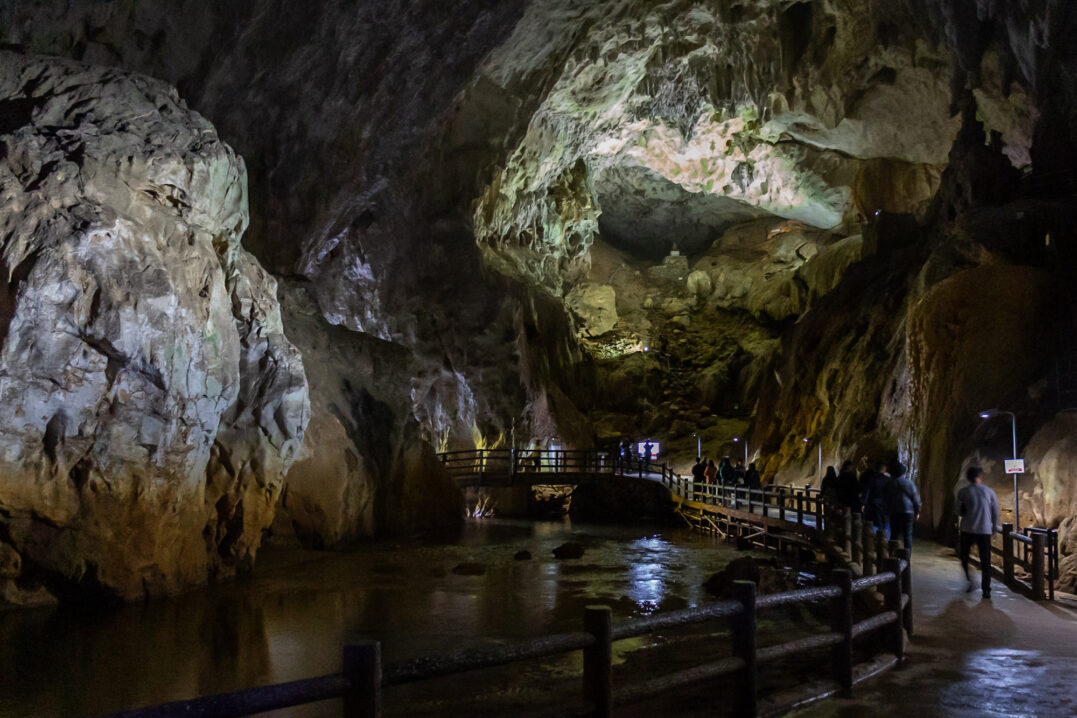
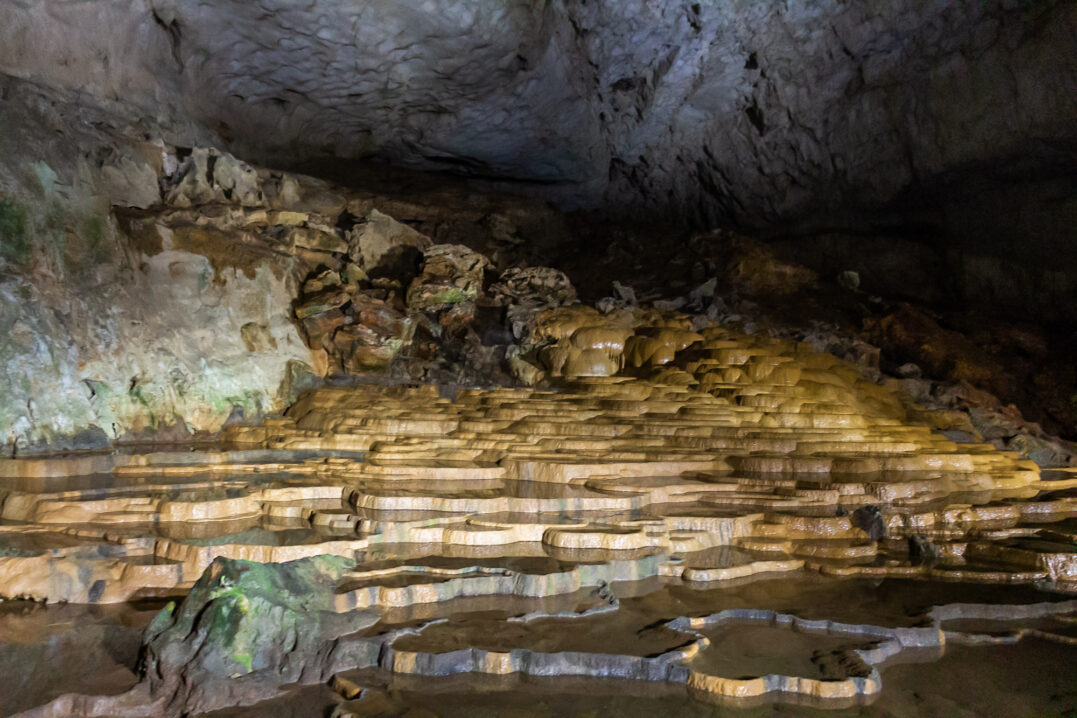
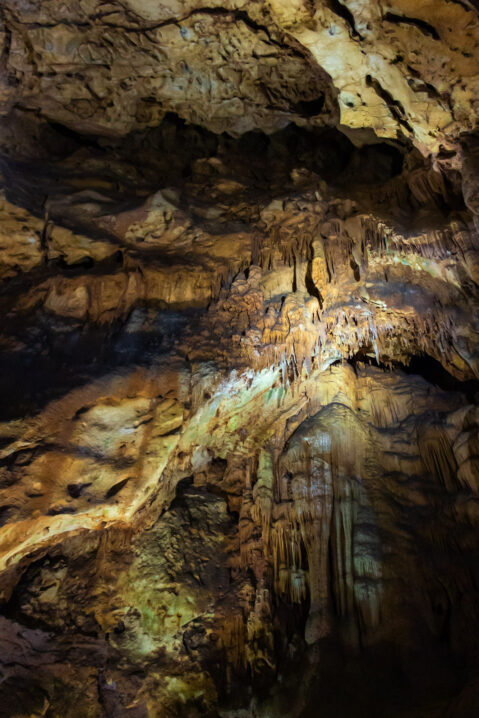

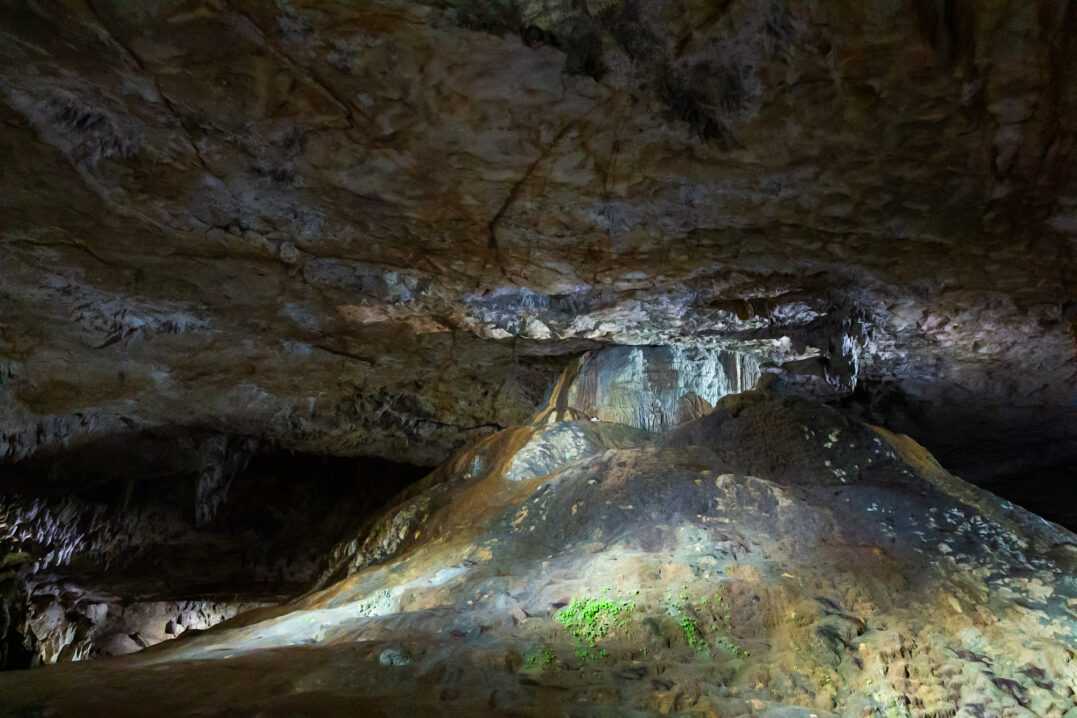
The cave has massive underground chambers, with some ceilings reaching up to 80 m (262 ft) high. There’s also plenty of stunning rock formations to explore, including the Hyakumaizara. The series of flat, stacked terraces, formed by calcite deposits, looks like a collection of plates.
Similarily, there’s theChimachida, or “one thousand plots of rice fields.” These rimstone pools resemble the terraced rice paddies that you often see in rural Japan. There’s also the Gokuraku Domei, or Heavenly Alliance—a stalactite and stalagmite that have almost connected into a column—and the Shōgun Seki, or General’s Rock, which looks like a seated king.
The route extends all the way to the Kurotani Entrance on the other side of the cave. But you can also exit about two thirds of the way through via an elevator that takes you up to the Akiyoshidai Plateau. From here, it’s about a 10-minute walk up through a small forest to an observation deck where you can enjoy a 360-degree panoramic view of the plateau. There’s also a small small café and gift shop where you can enjoy local treats and buy souvenirs.
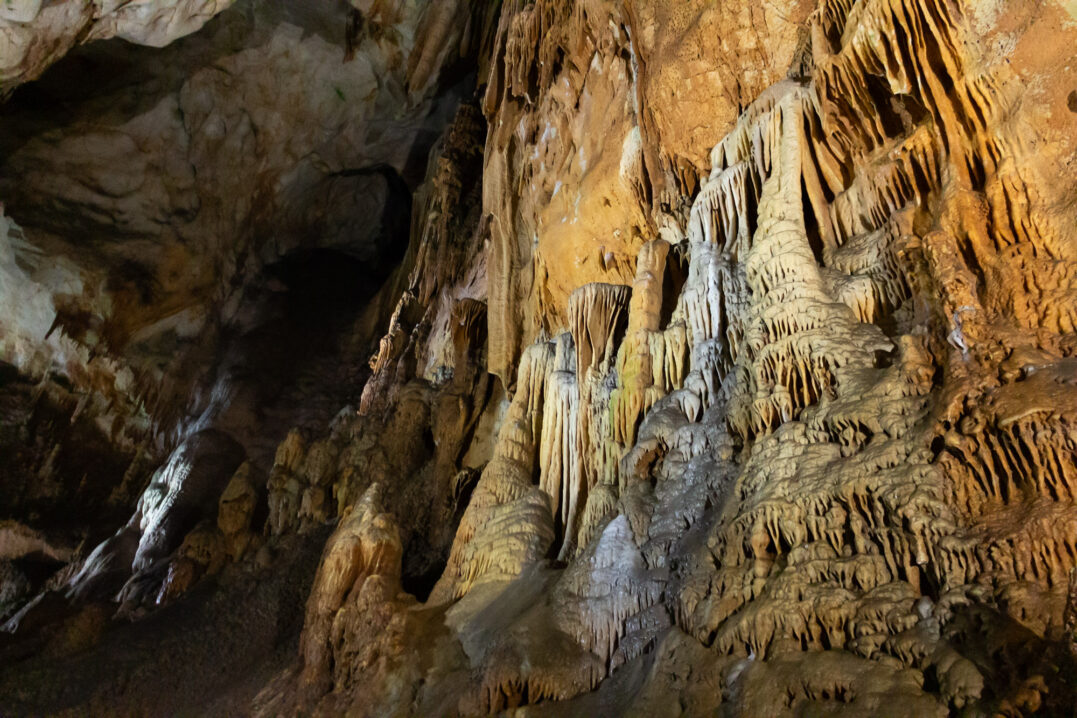

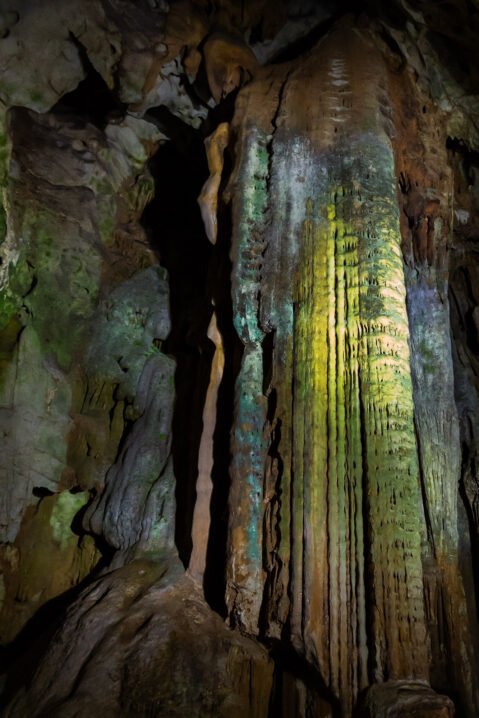
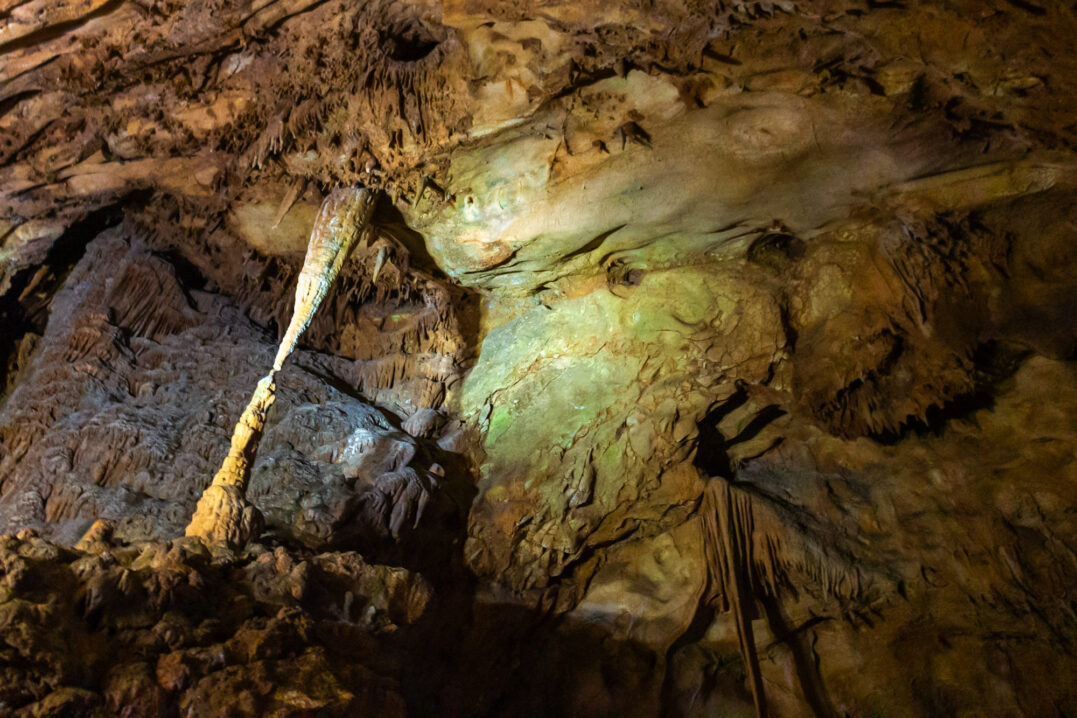
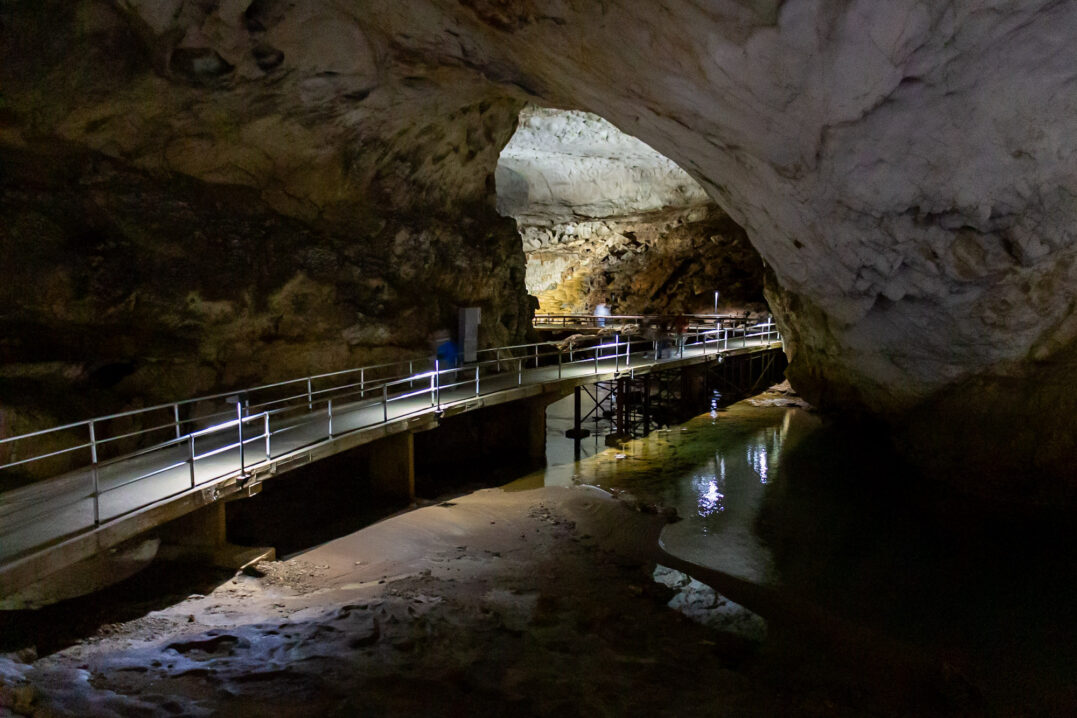
There’s several hiking routes that wind through the plateau, which is dotted with Paleozoic limestone pinnacles. Once a coral reef 300 million years ago, the landscape eventually eroded due to rainfall. The grasslands add to the scenery, changing color every season—from bright green in spring and summer, to golden yellow in autumn, to snow white in winter.
After a short coffee break, you can head back into the cave via the same elevator and finish the route. Just be sure to hang onto your ticket for re-entry. Then you have the choice of exiting through the Kurotani Entrance, or walking back to the Akiyoshido Entrance.
If you choose the Kurotani Entrance, you get to walk through the 300 Million Year Time Tunnel, which details the changes of Akiyoshido and the evolution of man. Outside at the Kurodani Information Center, you can catch a bus back to the Akiyoshidai Tourist Exchange Center, which is opposite the entrance to the shopping street.
It takes about an hour to walk from one of the end of the cave to the other, but you can design your route however you like. There’s also an Adventure Route, which costs 300円 on top of the regular ticket price. This takes you up via ladders to an elevated walking path in the cave that you can explore with a flashlight (as long as the water level isn’t too high).

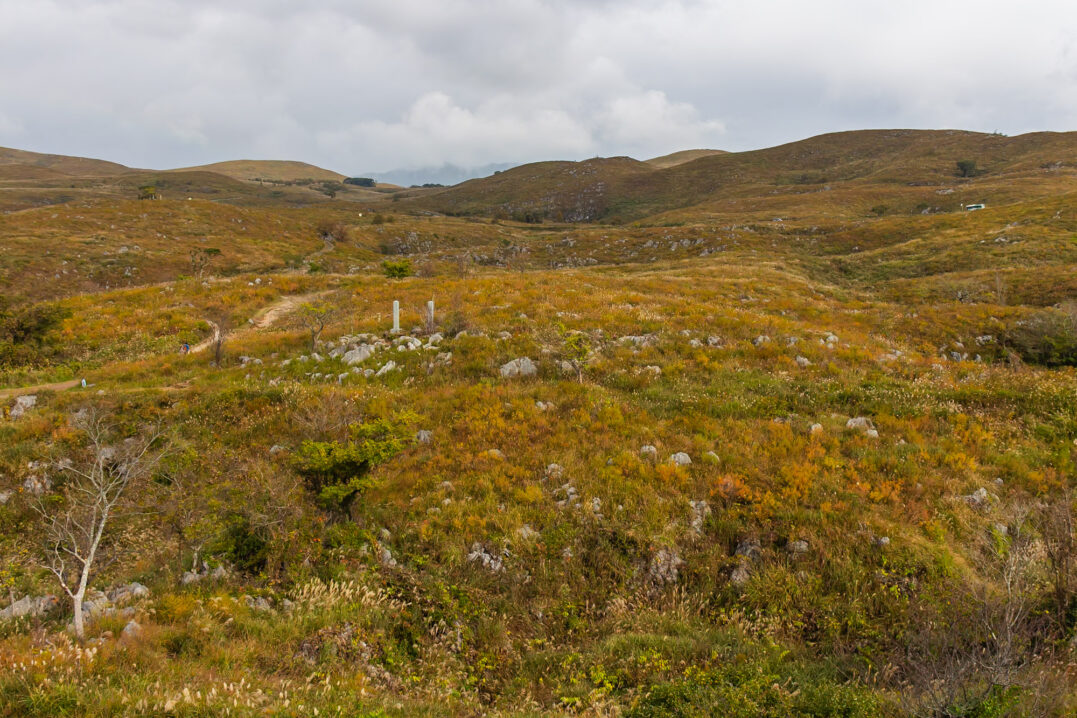
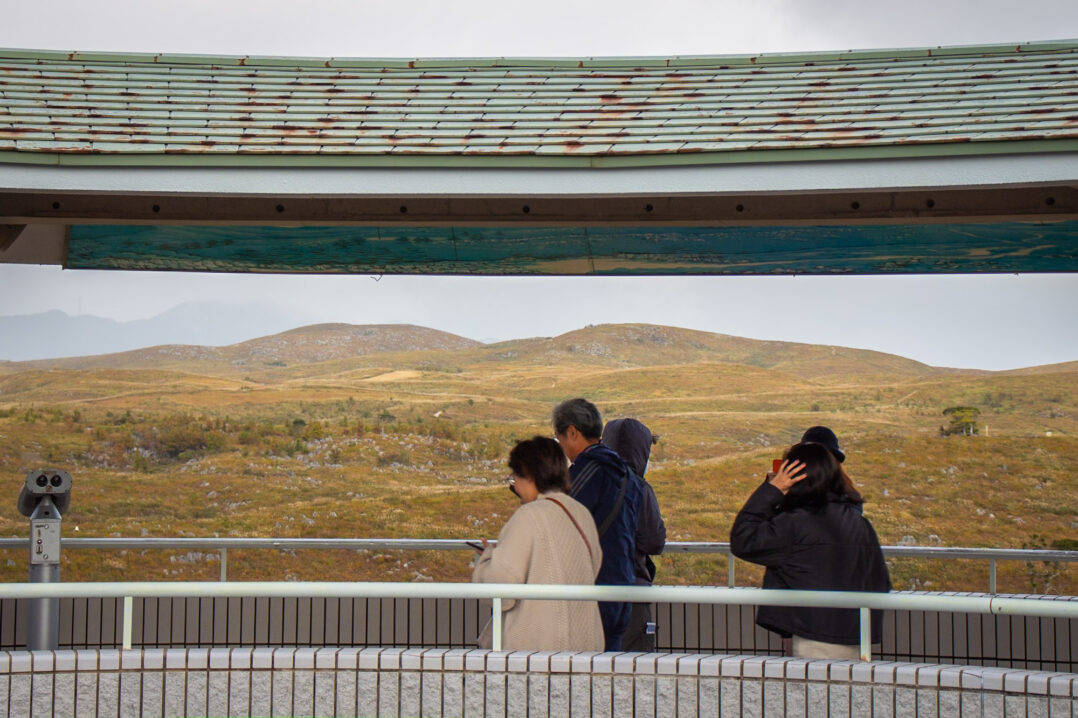

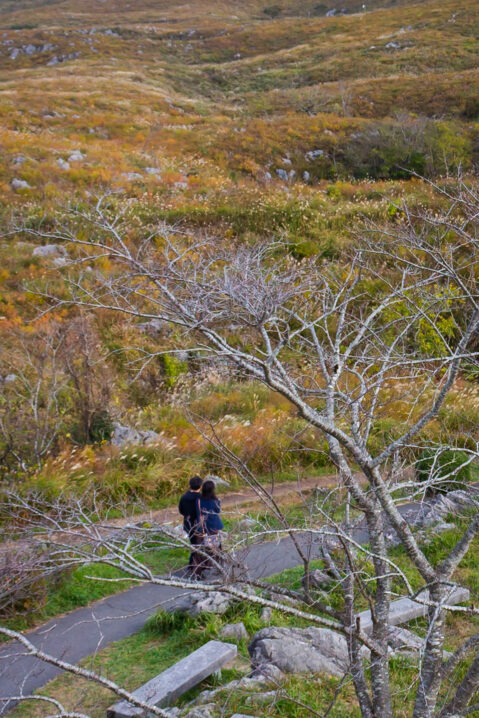
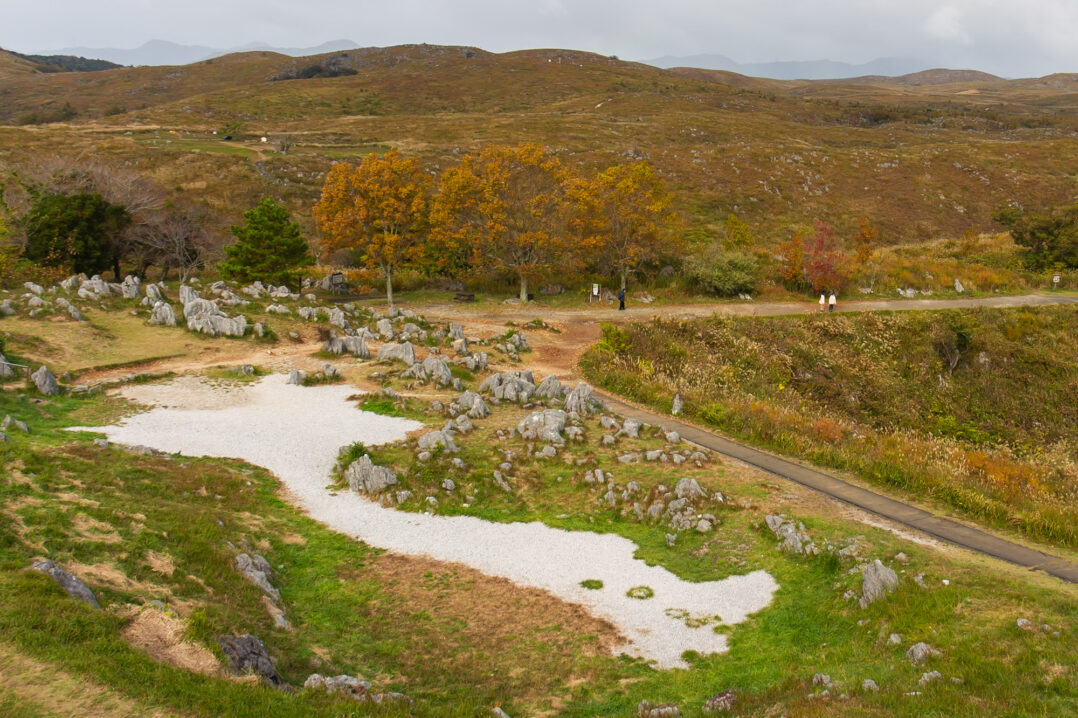
Visit Akiyoshido
Akiyoshido Cave is most easily accessible by car, but you can also get there by bus from JR Yamaguchi Station. Take the 秋吉線 bus bound for 秋吉 and get off at Akiyoshido. It takes approximately 1 hour and costs about 1,230円 each way.
Hours: 8:30~17:30 (Mar–Nov); 8:30~16:30 (Dec–Feb)
Admission: 1,300円
